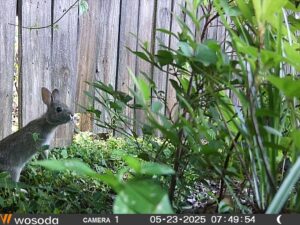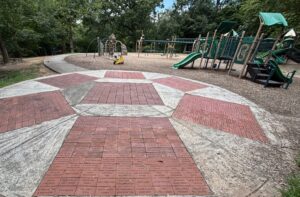By Jeremy Varner
I haven’t seen The Last of Us, HBO’s dystopian series about the collapse of society due to a fungus that attacks humans, or something like that. But I was a college student in the early 2000s and got to live through the early golden era of the internet when it was just for fun. Videos like “The Badger Song” were the viral hits of the day. Go relive the glory for a moment.
Badger badger badger
Mushroom mushroom
Mushrooms are cool and weird. They aren’t plants or animals; they are in their own kingdom. I heard a fascinating interview with a mycologist (a fungus scientist) who said science is still searching for answers to some of the most basic questions about fungi, including, “why here but not there?” and “why now and not then?” Sure, folks have figured out how to grow white button mushrooms aplenty, but the real culinary delicacies like morels are only gathered/foraged from the wild.
I’ve never gotten into mushrooms enough to go foraging for some of the wild, edible varieties like morels, chicken-of-the-woods, or chanterelles, but I do like noticing all the weird little fungus that you can encounter in your daily life. It seems that all the rain in June really helped the mushrooms go wild, or “the fruiting bodies to emerge,” as a mycologist would say, because I saw lots of fungi varieties in late June and early July. Of course, different fungi like different conditions, so whenever you look you’ll have a chance to find something interesting. Sometimes you find them when you aren’t even looking.
I make no recommendations/suggestions for eating mushrooms. That’s on you to figure out, but I do recommend getting a good field guidebook. My favorite is Todd Elliott and Steve Stephenson’s Mushrooms of the Southeast. I got to meet Todd a few years ago and he’s a cool guy. You can also check out his new Instagram account @fungi.hunter.
Here are some fungi I’ve found this summer in increasing levels of weirdness:
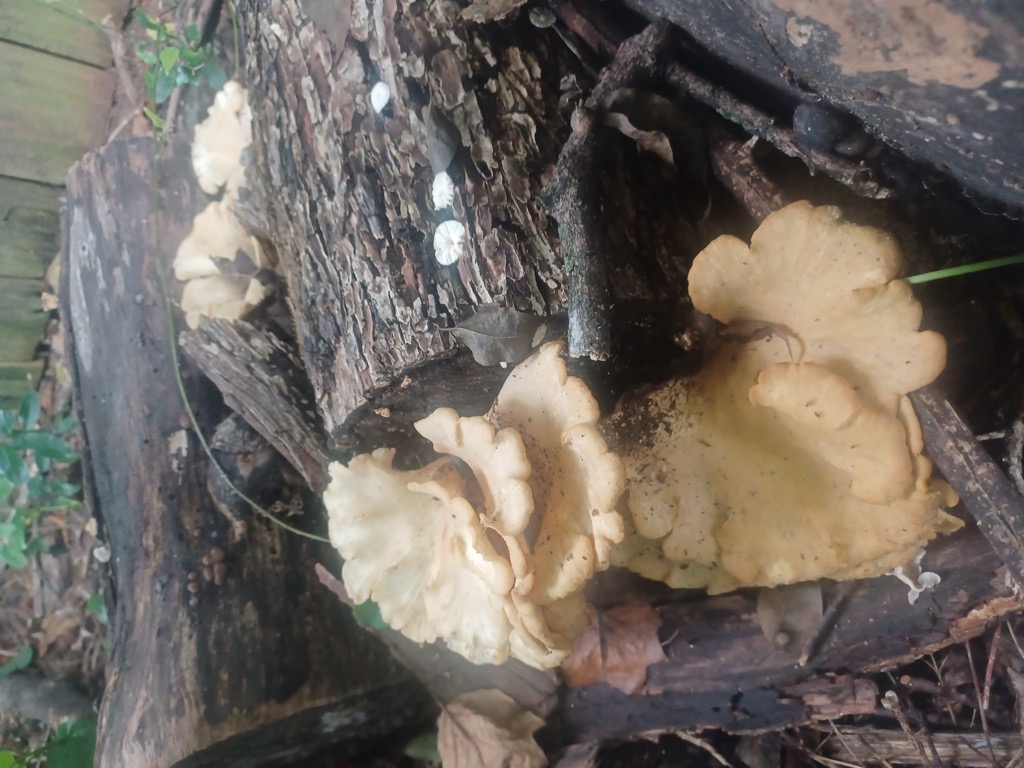
Starting off is a honeycomb fungus (Favolus teniculus) that I found on some decomposing firewood in the backyard. It doesn’t look terribly crazy, but up close it smelled like Berkely’s Gulp Trout Dough aka PowerBait. (If you are country enough you know exactly what that smells like.) This fungus might make good fishing bait but otherwise is pretty standard looking.
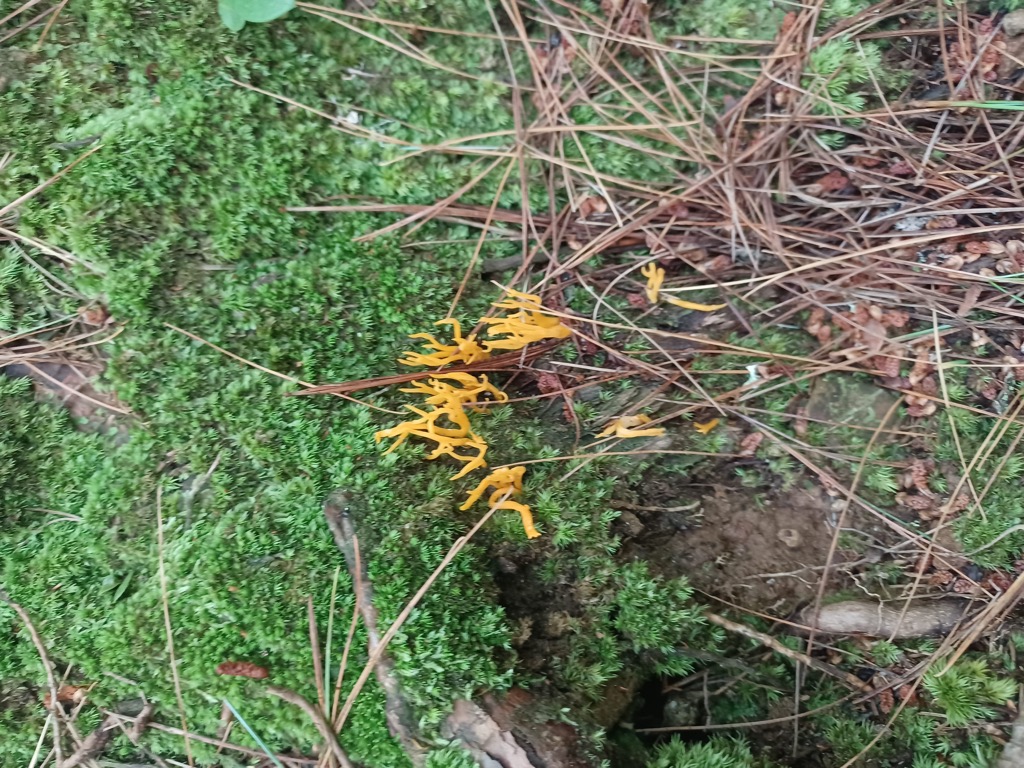
Next up is a jelly antler or yellow staghorn (Calocera viscosa) that I spied along the Falls Branch Falls trail near Cherry Log, Georgia. Like a lot of fungi, it has many common names so maybe you know it as something else. I glanced down and in a bed of soft green moss were several shockingly bright orange-yellow spikes like miniature Gatorade stalagmites. It looks very cool and maybe a little dangerous.
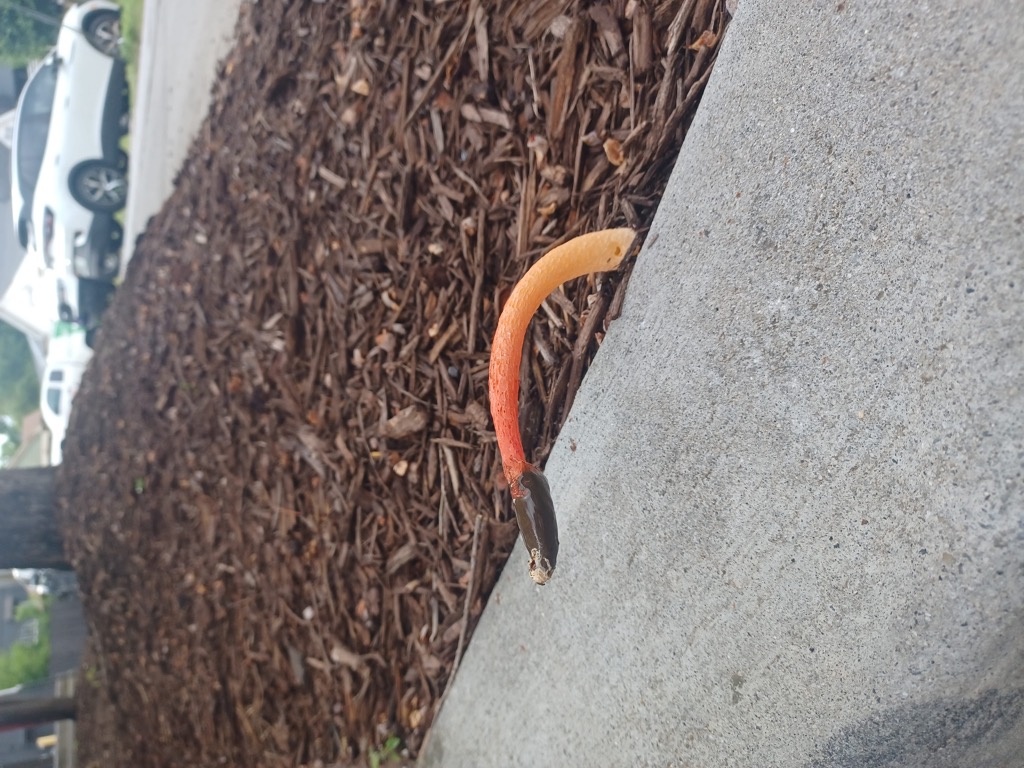
Elegant Stickhorn
Finally, the weirdest is the elegant stinkhorn (Mutinus elegans), which I found sprouting from the wood mulch outside of Wood’s Chapel BBQ in Summerhill. They are supposed to smell awful, but I didn’t get close enough to whiff, and their air was saturated by BBQ goodness anyways. But that is a crazy looking fungus, which inspires a plethora of nicknames including my favorite: Devil’s dipstick.
Keep your eyes open and you never know what you’ll see. Maybe you can make up your own nicknames for fungi.

